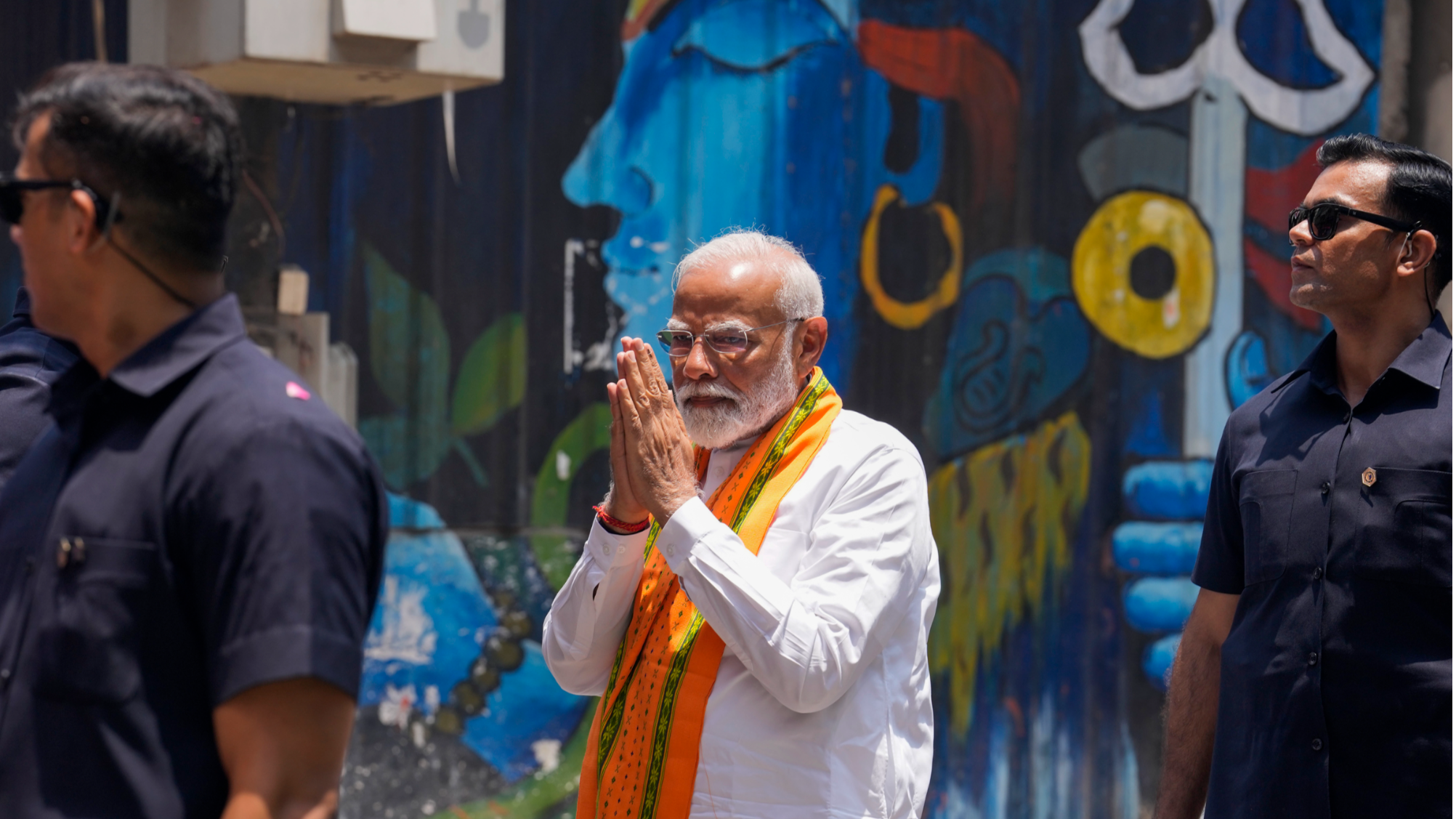
Marathon election ends after heatstroke in one state kills 33 polling personnel
The ruling party alliance of Indian Prime Minister Narendra Modi is projected to win a large majority in the general election that concluded on Saturday, according to media exit polls, suggesting it would do better than most analysts had earlier predicted.
If the results, to be made public this week, confirm the exit polls, Modi would become only the second prime minister to win a third consecutive term in India after Jawaharlal Nehru, the country's first premier after independence in 1947.
Dismissing the prediction, the opposition has termed the exit polls as "prefixed". Votes are due to be counted on Tuesday, and the results could be announced the same day or the next.
Two exit polls over the weekend projected the ruling National Democratic Alliance led by Modi's Bharatiya Janata Party could win more than 350 seats in parliament. At least six exit polls projected the NDA could win between 355 and 380 seats
Voting in the seventh and final staggered round of the six-week poll was held in extremely hot weather across swaths of the country.
ALSO READ: Exit polls predict ruling bloc's win in India's elections
At least 33 polling staff members were reported to have died from heatstroke in the northern state of Uttar Pradesh alone, where temperatures reached 46.9 C, top election officials said.
"Monetary compensation of 1.5 million rupees ($18,000) will be provided to the families of the deceased," said Navdeep Rinwa, chief electoral officer for Uttar Pradesh.
Votes cast will elect 543 seats for the lower house of parliament, the Lok Sabha. A party or coalition needs a simple majority of 272 to form a government. As members of parliament choose the next prime minister, the leader of the winning party or coalition that holds the majority of seats in the parliament has a decisive role.
Two exit polls over the weekend projected the ruling National Democratic Alliance led by Modi's Bharatiya Janata Party could win more than 350 seats in parliament. At least six exit polls projected the NDA could win between 355 and 380 seats.
ALSO READ: India votes in final phase as Modi and Rahul Gandhi eye victory
The opposition INDIA alliance led by Rahul Gandhi's Congress party was projected to win between 125 and 182 seats, Reuters reported.
Retaining strongholds
Many exit polls suggested that the NDA will retain many of its strongholds in northern and western India and draw enormous support from the east, while making significant gains in southern states.
The Election Commission of India said on social media: "Even as (the) seventh phase of polling in the general elections wraps up, (the) commission thanks all stakeholders: voters, polling personnel, security forces, media and political parties."
The commission announced the elections on March 16, and the first phase of polling took place on April 19. Nearly 1 billion people were eligible to vote.
Modi claimed victory in his first comments after voting concluded.
ALSO READ: India's massive election faces heatwave challenge in penultimate phase
"A heartfelt thank you to all those who exercised their franchise. Their active participation is the cornerstone of our democracy. Their commitment and dedication ensures that the democratic spirit thrives in our nation."
Modi came to power in 2014 after the BJP and its allies formed government and toppled an incumbent Congress-led coalition. Modi remains highly popular among the country's majority Hindu population
Indians had voted in record numbers to reelect his government, he said on X.
Modi came to power in 2014 after the BJP and its allies formed government and toppled an incumbent Congress-led coalition. Modi remains highly popular among the country's majority Hindu population.
In his 10 years in office he has laid stress on development and the country's growing international prominence, whereas during the election campaign opposition leaders highlighted inflation, including soaring food prices and unemployment.
READ MORE: Dance videos of Modi, rival turn up AI heat in India election
Modi's government has set a goal for India to be a developed country by 2047, the centenary of independence from British rule.
Modi held about 200 rallies throughout the country over more than two months of campaigning and gave about 80 interviews to TV news channels and newspapers.
As he looked set to win a third term, his top opponent, Arvind Kejriwal, returned to jail on Sunday as the interim bail granted by the top court ended.
Kejriwal, chief minister of New Delhi and a key leader in an alliance formed to compete against Modi, was detained in March over a long-running corruption investigation but was given a limited release to allow him to campaign.
Agencies contributed to this story.
The writer is a freelance journalist for China Daily.


